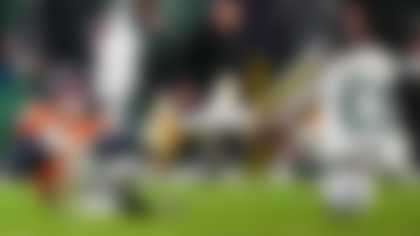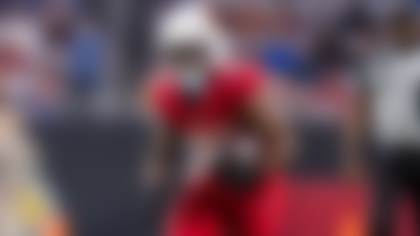INDIANAPOLIS -- Chris Weinke was facing the same fears, the same challenges and the same frustrations at 26 years old as Peyton Manning is now, approaching his 36th birthday.
And having fought back from a spinal fusion, Weinke's a shining example that the road to recovery isn't exactly uncharted territory.
Weinke became Florida State's starting quarterback as a sophomore, following seven seasons of minor league baseball, and had the Seminoles at 9-1 when he went down in November of 1998. The neck surgery followed and, just as Manning has over the last few months, Weinke had to endure the protracted process of waiting for nerves to regenerate before bringing his arm strength back after that.
How'd it work out? Florida State won a national title with Weinke under center for all 12 games. Weinke won the Heisman Trophy the year after, and was taken in the fourth round of 2001 NFL Draft. He went on to play seven NFL seasons.
Comparing his injury to Manning's, Weinke said: "In terms of the similarities between the two, the fusion and the nerve regeneration are exactly the same." So his experience is, indeed, applicable here.
"It was a true test of patience," said Weinke, who now coaches at IMG Academies in Florida. "What I had to learn was I had to trust the doctors, and trust the trainers. You just didn't know when your body was going to be able to recover fully. The biggest thing with nerve issues is the atrophy in your throwing arm. For me, the rehab consisted of an intense 6-7 hours per day. But then there was a lot of time spent just waiting for my body to recover."
Since September, both Manning and the Colts have been warned not to set timetables on recovery, which goes back to Weinke so strongly emphasizing the need for patience. But Weinke's rehab does provide an example of how quickly things can progress. After the November 1998 surgery, he couldn't grip a football. Five months later, when the Seminoles started spring ball, he participated and says he could throw "with purpose. And then at seven months, I was throwing the ball at 100 percent."
We know Manning was throwing in December, which means -- at least at that point, three months out of surgery -- he was ahead of Weinke then. The rehab process can flatten out and timetables are hard to come by, but the fact that he could throw a regular football then, according to Weinke, is a good sign.
Darlington: Expect the unexpected
Peyton Manning to Miami? The Dolphins won't rule it out, but be careful reading too much into that, Jeff Darlington warns. **More ...**
"It's key," Weinke said. "As I just mentioned, you're taking baby steps along the way. As long as he continues to progress, what I found out, was at the end of the process my arm was actually stronger than it was prior to the surgery. The reason being is that you focus on the little muscles, you rebuild yourself really from ground zero, because of the atrophy, and when I came back, fundamentally I was better, I was stronger, and actually threw the ball with more velocity after the surgery than I did prior."
There is one big difference, though, with Manning's situation: He is nearly a decade older than Weinke was at time of injury. It could be more difficult and/or more time-consuming, and maybe significantly so, to go through the process from starting to throw again to throwing at an NFL level.
What's similar is the two keys to recovery: increased strength in his grip and triceps.
"Confidence came from building strength in my throwing arm," Weinke said. "Once I built up the triceps muscle, the first milestone was getting grip in my hand again. The nerves controlled it all the way down to my first three fingers, and I couldn't even grab a football. That's where it started, first and foremost, got the confidence to be able to grip a football and we went from there.
"But then, I started throwing a tennis ball, moved up to a Nerf football, and then was able to throw, at the five-month mark, a regular football. It was baby steps. It was patience. It was sticking to the plan and having faith in the doctors and trainers."
And then, it was just getting stronger.
Based on the information I presented -- that Manning's throwing, but we don't know how well; that Manning's improved, but the rate of improvement is a bit cloudy -- Weinke's educated opinion was that we'll see No. 18 on an NFL field again. But he declined to estimate when.
"I can honestly say there's one guy who can answer that question and that's Peyton Manning. I don't wanna speak on behalf of him, and no one should speak on behalf of him," Weinke said. "He'll make that decision. But in my heart of hearts, the old No. 18 will be back out on the field having success.
"He's a true competitor, one of the best that's ever played the game. He's got a burning desire, in my opinion, to come back, and prove to people he can come back from something like this. Trust it. Trust the process. Have fun with it, and believe that you'll be back on the football field."
Follow Albert Breer on Twitter @AlbertBreer











